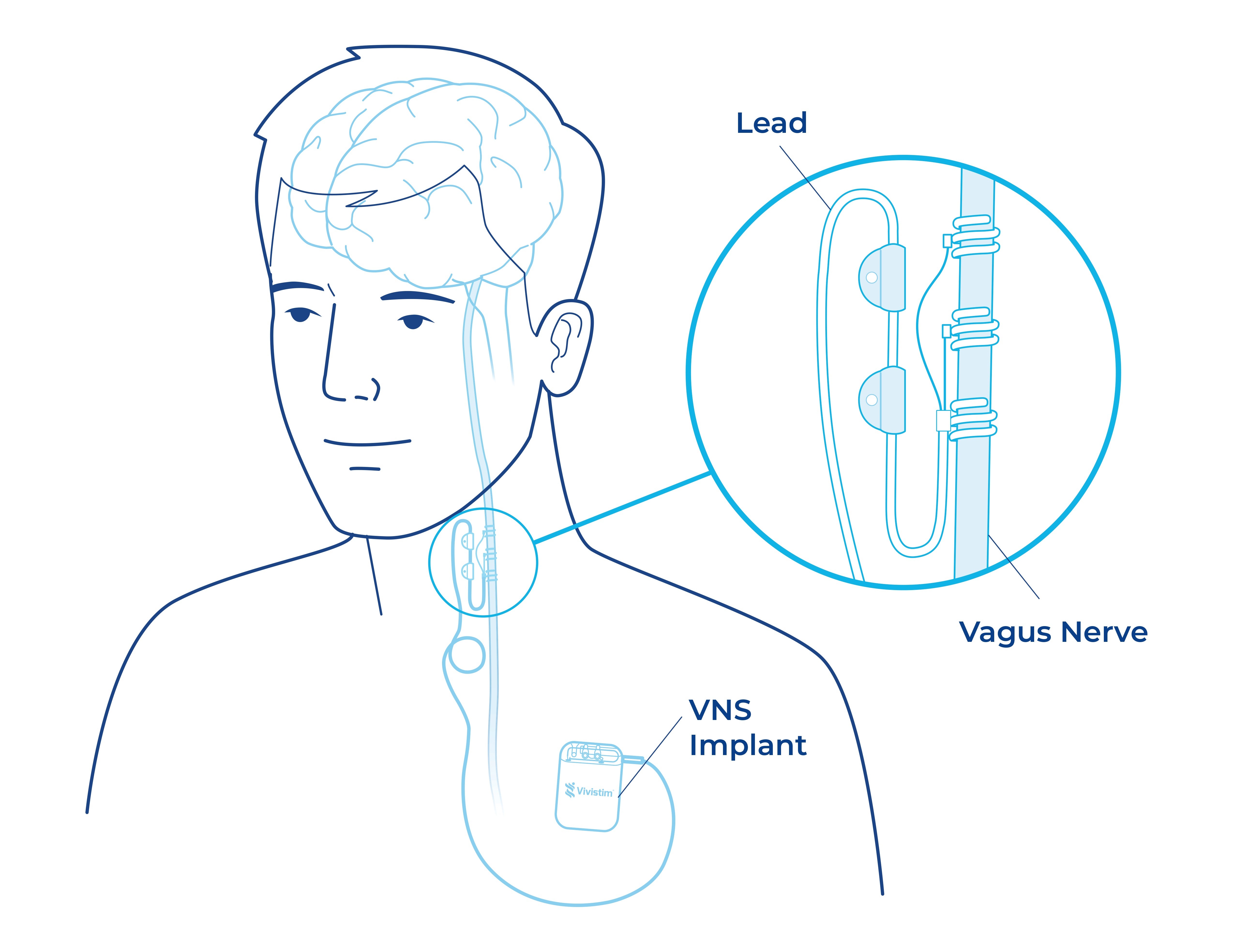Stroke Vagus Nerve Stimulation (VNS) Rehabilitation
A neurostimulation device that helps stroke survivors regain their independence and improve their quality of life.
After experiencing a stroke, nearly 60 percent of survivors continue to suffer from persistent impaired upper limb function and weakness. This period is often referred to as a recovery plateau, which means their condition stops improving and indicates the problem isn’t in the muscles, but in the brain or the nerves.
Stroke VNS Rehab Can Help Create New Neural Pathways
WakeMed offers a safe and effective breakthrough treatment via a small, implanted FDA-approved device that improves upper limb function for stroke survivors who have not yet regained hand and arm mobility after active rehabilitation therapy, even years later.
Within WakeMed’s Stroke Program, neurosurgeons, neurologists and occupational therapists collaborate to offer vagus nerve stimulation (VNS) during therapy to improve upper limb function for stroke survivors.
When used in combination with outpatient occupational therapy and at-home activities, the VNS stimulation activates the parts of the brain (via the vagus nerve) that are important for motor learning and generates two to three times more hand and arm function for stroke survivors than occupational therapy alone after six weeks of outpatient therapy.
Even if a stroke happened years ago, patients may experience increased hand and arm function over time. When the stroke VNS therapy boosts the brain’s neural activity, it builds lasting connections that continue to work even when the implanted device is not in use.
Benefits of Stroke VNS Rehab
Users report improvement across numerous qualities of life measures, including:
- Increased functional mobility, as early as two to three weeks
- Improved self-care such as preparing meals, getting dressed or playing cards
- Positive daily living
The Process
1. Same-Day, Outpatient Procedure
The device is placed during a short outpatient procedure, typically by a neurosurgeon. The device is placed under the skin of the chest and the lead is tunneled from the neck to the generator.
Similar procedures safely performed for 25+ years to treat other medical conditions.
2. Intense Outpatient Therapy
An occupational therapist uses a button to activate the neurostimulator repeatedly during rehab tasks. Most patients do not feel the stimulation.

3. At-Home Therapy
Patients can activate the device at home during rehab or daily activities using a special magnet.
Is Stroke VNS Rehab Right for You?
Stroke VNS Rehab is intended for chronic ischemic stroke patients with moderate to severe arm and hand impairment six months after stroke. If you think you may benefit from Stroke VNS Rehab, speak to your health care provider about receiving an evaluation with a WakeMed rehabilitation professional to see if you are an eligible candidate.
If you pass the initial rehab assessment, you will then be referred for a consultation with a neurosurgeon to determine if you are a good candidate for the implantation procedure.
For more information about Stroke VNS Rehab, call 919-350-7000.